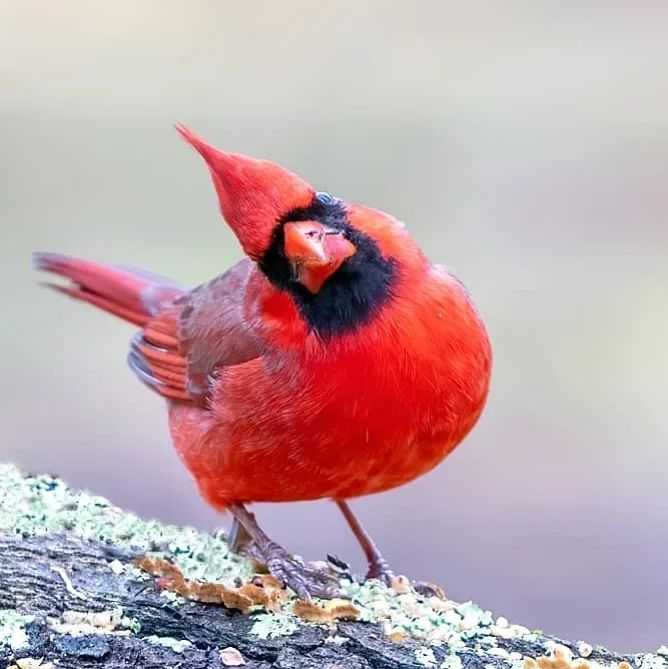Birds find feeders with their keen eyes, chat with their friends about new food spots, and remember where they’ve eaten before. They’re great at letting others in on a good food source. Once a bird finds your feeder, it’s likely they’ll remember and come back. So, as you explore the world of bird-watching, you’ll find it rewarding and enjoyable to have these feathered visitors in your garden.
So, if you’ve ever wondered, “How do birds find bird feeders?” keep reading to find out!
I’ve been attracting birds to my yard for more than 25 years and always wondered how they knew where to find the feeders. That’s why I was eager to dive into the research for this article and uncover the science behind how birds find feeders. Before we get into the details, here are the 9 science-based ways birds are able to find bird feeders:
9 Science-Based Ways Birds are Able to Find Bird Feeders:
- Sense of Sight
- Communication
- Memory
- Curiosity
- Sense of Hearing
- Feeder Placement
- Sense of Smell
- Consistency
- The Magnetic Pull theory
1. Birds Find Feeders Using Their Bird’s-Eye View
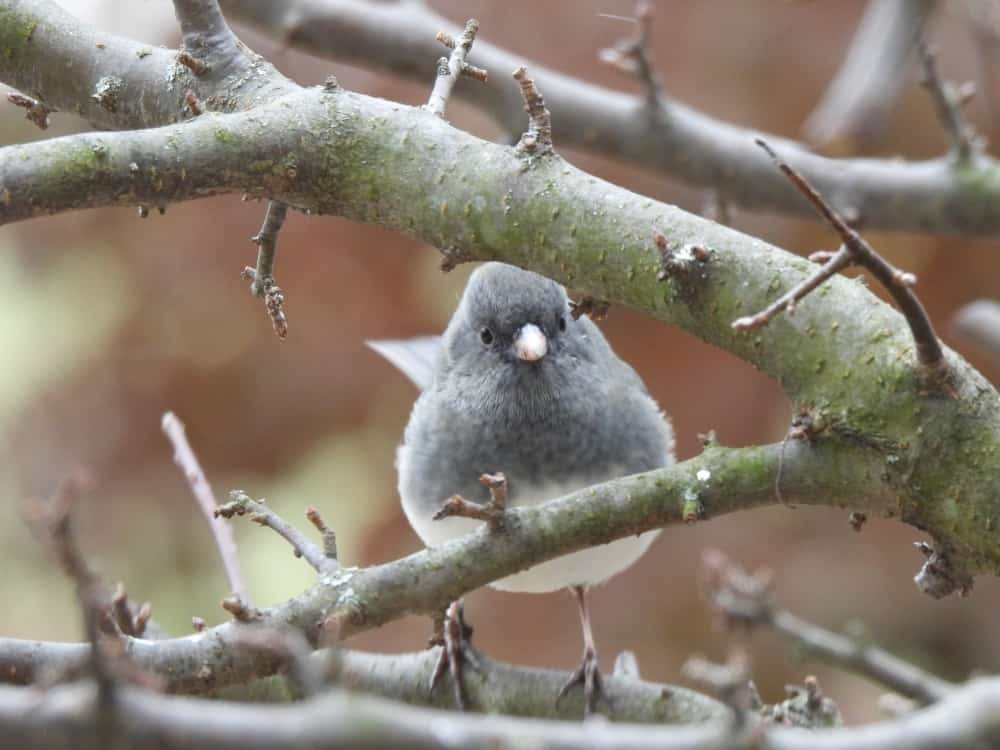
Birds have incredibly keen eyesight; depending on the species, they can spot potential food sources from up to two miles away or more.
This long-distance advantage is no surprise since birds spend most of their time flying high above the ground.
Additionally, birds’ eyes are proportionally larger than humans, allowing them to see even the smallest details around three times farther than we can. How is this possible? It all comes down to their biological eye structure.
Avian eyes have multiple features that enhance their clear vision. To start, thanks to two powerful muscles within their eye, birds can control the curvature of both their lens and cornea (unlike humans, who can only regulate their cornea). This ability increases the refraction power of both functions, giving them crystal-clear sight.
Secondly, birds’ retinas are far more advanced than humans and any other animal species. They contain many color-receptor cones, which form clear images no matter where light strikes the retinal wall.
The avian eye features a singular retinal structure called a pecten, which contains concentrated blood vessels instead of having them spread throughout the retina, like a human eye. The result? Reduced visual interference and improved motion sensitivity.
Finally, birds can perceive color incredibly well, viewing vibrant blues, reds, and yellows. This ability, known as tetra-chromatic vision, makes it easier for them to see in dim light, like dusk and dawn, which is why you will often see them feeding during these times.”
Since birds see color more vibrantly than humans, it’s easier for them to spot bird seed in your feeder, helping them locate it quickly at any time of day.
2. Bird Communication: The Power of Word
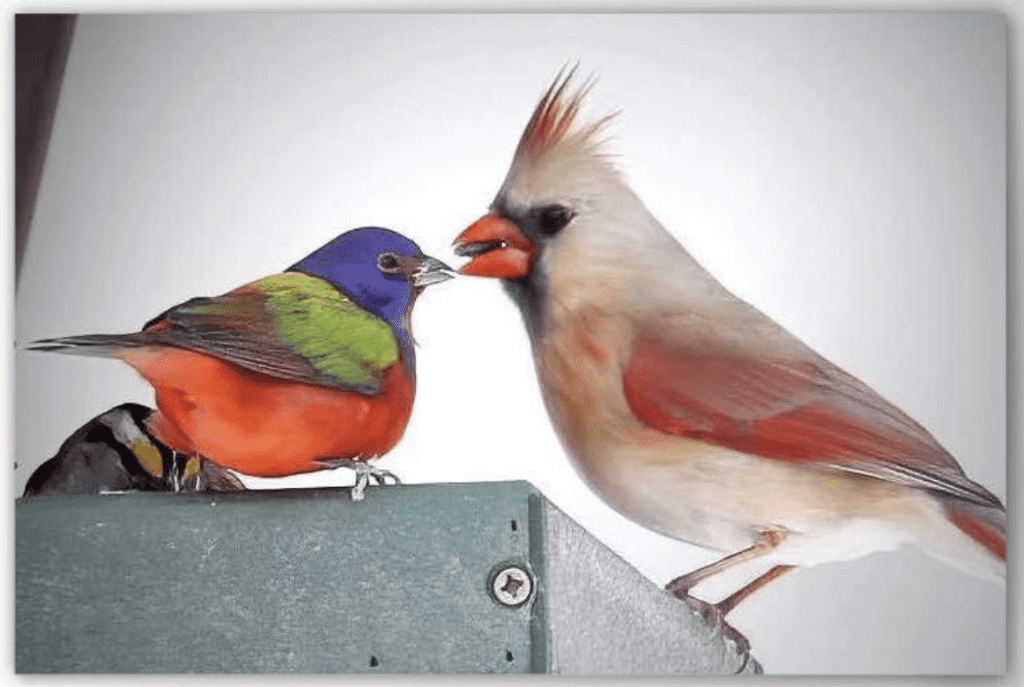
It’s no secret that birds are very vocal animals, using sounds and gestures to communicate different messages. It is believed they use species-specific calls and sounds to signal food sources, which explains why a feeder may have a large amount of one type of bird visiting repeatedly.
In fact, some species, like song sparrows, can learn as many as twenty different songs, using them in different social interactions. While avian “language” allows birds to tell each other where to find food, they also use gestures like wing flapping and head bobbing to send messages. This method is especially prevalent within flocks for information sharing.
Since there are no leaders, the birds use a form of biological radio communication, where each one listens to the signal of its seven closest neighbors, quickly spreading a message to the group. So, when one bird spots food, it will send out a broadcast telling the flock where to go, and they will all follow suit accordingly.
3. The Role Of Memory in Navigation
Memory plays a huge role in avian navigation, which explains how many species migrate thousands of miles to the exact same location year after year. While not every bird migrates, they all have an innate ability to remember locations, especially when food is involved.
Studies show that some birds have a greater capacity for long-term memory retention than others, but almost all can learn to remember better over time.
Another interesting fact is that many birds learn through mimicry, which they use to help them find new food sources they can visit multiple times. For example, if a bird sees a flock spontaneously take off, it may assume they’ve spotted food and follow along. If correct, it now knows where to find food and will visit the location repeatedly.
4. Innate Curiosity and Exploration
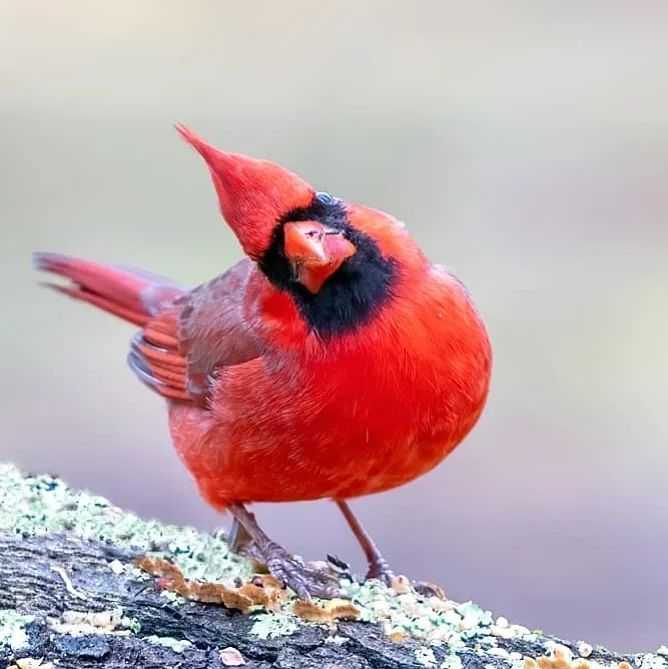
Birds are innately curious and explorative animals, often investigating new areas for non-task-oriented reasons. In other words, they simply like to explore for the fun of it.
It’s not uncommon for a bird to explore a new environment in what experts believe to be a way to learn and gather information. Foraging birds use this tactic to find areas where food is prevalent, especially when they have hatchlings to feed.
Scouting for food is a routine activity for birds, so being curious by nature is beneficial for locating food on a daily basis.
5. Auditory Signals
Along with sight, sound is one of the most important senses birds use to locate feeders.
It may come as a surprise, but birds do have ears and much more advanced hearing than humans. Similar to people, a bird’s ear has three components: an outer ear, a middle ear, and an inner ear.
While there is no visible external structure, avian ears look similar to a lizard, with ear coverts that protect them from the wind as they fly. Birds possess a full range of hearing, being able to perceive sounds between 100 Hz and 14 kHz, and may be able to hear infrared sounds, letting them predict incoming storms.
Birds use their sense of hearing to identify the sounds made by feeders, like seed movement and interactions between other birds as they eat. Certain species of birds are more attracted to these sounds than others, like Cardinals, Blue Jays, House Sparrows, and Morning Doves, which is why they are more common in backyard feeders.
6. Placement and Visibility of the Feeder
Where you place a bird feeder is crucial for attracting more birds. Birds mainly use their sight and hearing to find feeders. If a feeder is out in the open, they can see it from far away, especially if it moves or if other birds are around.
However, birds also like having shrubs or trees nearby because it makes them feel safe from predators. So, while it’s good for the feeder to be visible, having it near some bushes or trees can help the birds feel more secure.
If you hide the feeder too much, like deep in bushes or under a porch, birds might not notice it, and it’s harder for them to hear any sounds from it.
It’s a balance.
7. The Influence of Scent
While it may not be their primary method of locating meals, some evidence suggests that birds use smell when scouting for food, with certain species using scent to detect and find their next meal.
Newly emerging data shows that when a food source is partially hidden, birds may use their sense of smell to help them locate it. In fact, scientists observed a yellow-backed chattering lory distinguish between a feeder containing artificial nectar from one with only water, using only its sense of smell.
While the science is still young, it opens doors to a deeper understanding of avian behavior.
8. Consistency is Key
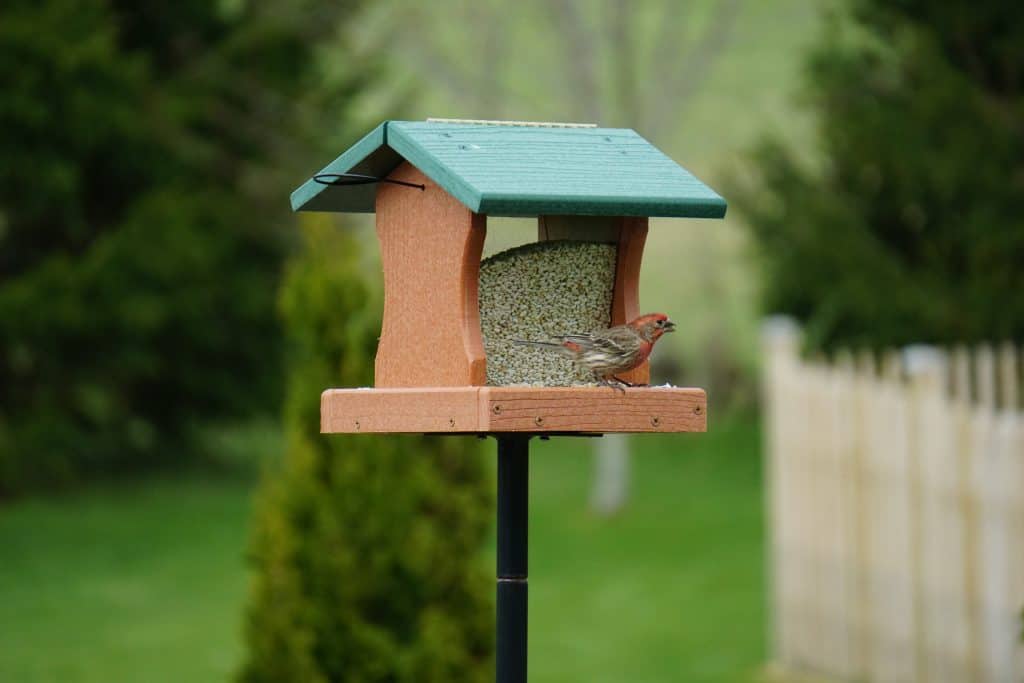
Birds use a combination of memory and sight to locate food, which is why consistently keeping your feeder full is key to attracting a steady flow of birds.
Many birds will memorize when you load your feeder and will wait expectantly for a fresh meal. The more consistent you are, the more trust you build with your feathery friends, resulting in regular visits for generations to come.
9. The Magnetic Pull: A Theoretical Perspective

One interesting theory raised by experts to explain migration and feeder location is called magnetoreception, or the use of a magnetic sense for navigation.
Birds may use the Earth’s magnetic field like a GPS to help them locate and remember different locations. If true, birds may be able to feel the specific magnetic frequency at your feeder’s site and use it to find the exact spot repeatedly.
Tips For New Bird Feeder Owners
As a new bird feeder owner, there are some tricks you can use to help encourage visits from multiple species and ensure activity throughout the day. A few helpful tips include:
- Experiment with different types of bird food – Different species enjoy different seeds, so by using a variety of food you can attract a more diverse group of birds.
- Keep your feeder clean – A dirty feeder is a magnet for mold and mildew which birds will avoid, so keeping it clean will encourage them to return day after day.
- Add a bit of peanut butter – Peanut butter makes it easier for birds to smell your feeder so they know it is a reliable food source.
- Select the right type of feeder – Not all feeders are created equal; choose one that keeps squirrels out and gives birds a safe and comfortable place to sit while they eat. Bright colors will also help catch their attention.
- Place your feeder in a highly visible space – Birds rely on their sight to locate food, so placing your feeder in a visible area will help them locate it faster.
- Use multiple feeders at different levels – Placing feeders at different levels will make them more attractive to different species and offer more food for them to eat.
The number one tip to remember is to be patient. It may take a few days to a month for birds to locate the new food source and begin using your feeder routinely, so don’t get discouraged if it doesn’t happen right away!
Frequently Asked Questions
How do birds find your bird feeder?
Birds use a combination of senses to locate feeders, including sight, hearing, and smell.
How do birds know there is a bird feeder?
Birds are often alerted to a feeder through movement like swinging or other bird activity.
How long does it take birds to find a new bird feeder?
It can take anywhere from one day to a month for birds to find a new bird feeder. Placing it in an open location and using a model with attractive colors is a great way to catch their attention.
Do birds tell other birds where feeders are?
Yes, birds often communicate with each other, using vocalizations and gestures to alert others to new food sources.
Conclusion
When setting up a new bird feeder, keep in mind that sight is the number one sense birds use to locate new food sources. Placing your feeder in a highly visible and quiet location will help grab their attention and encourage feeding. Just remember birds also need shrubbery nearby to feel safe.
Birds are very vocal animals and will communicate with others when they locate food, so don’t be surprised if you begin seeing multiple birds of the same species at your feeder.
Due to their impressive memories, birds will visit locations where they have a consistent food source, so be sure to keep your feeder stocked for the best results.
While it may take time, owning a bird feeder is one of the most satisfying and exciting experiences, so be patient, and soon you’ll have endless feathery entertainment you can enjoy year after year.

